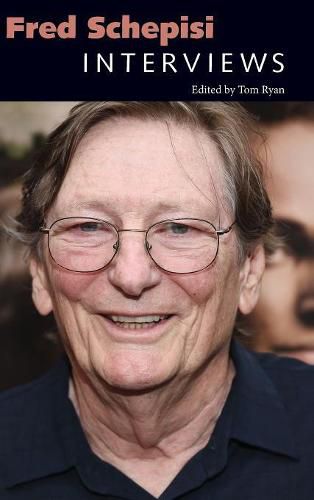Readings Newsletter
Become a Readings Member to make your shopping experience even easier.
Sign in or sign up for free!
You’re not far away from qualifying for FREE standard shipping within Australia
You’ve qualified for FREE standard shipping within Australia
The cart is loading…






This title is printed to order. This book may have been self-published. If so, we cannot guarantee the quality of the content. In the main most books will have gone through the editing process however some may not. We therefore suggest that you be aware of this before ordering this book. If in doubt check either the author or publisher’s details as we are unable to accept any returns unless they are faulty. Please contact us if you have any questions.
In the New Yorker, Stephen Schiff has described Fred Schepisi (b. 1939) as probably the least-known great director working in the mainstreamAmerican cinema-a master storyteller with a serenely muscular style that can make more flamboyant moviemakers look coarse and overweening. Schepisi’s launch in Australia during the country’s film renaissance of the 1970s and his ongoing international work have rightfully earned him a reputation as an actors’ director. But he has also become a skillful stylist, forging his own way as he works alongside a talented team of collaborators.
This volume includes twenty interviews with Schepisi andtwo with longtime collaborators, cinematographer Ian Baker and composer Paul Grabowsky. The interviews trace the filmmaker’s career from his beginnings in advertising, through his two early Australian features-The Devil’s Playground and The Chant of Jimmie Blacksmith-to his subsequent work in the United Statesand beyond on films as various as Plenty, Roxanne, A Cry in the Dark, The Russia House, Six Degrees of Separation, Empire Falls, Last Orders, and Eye of the Storm. Schepisi’s films are diverse thematically and visually. In what is effectively a master class on film direction, Schepisi discusses his creative choices and his workwith actors and collaborators behind the scenes. In the process, he provides a goldmine of insights into his films, his filmmaking style, and what makes him tick as an artist.
$9.00 standard shipping within Australia
FREE standard shipping within Australia for orders over $100.00
Express & International shipping calculated at checkout
This title is printed to order. This book may have been self-published. If so, we cannot guarantee the quality of the content. In the main most books will have gone through the editing process however some may not. We therefore suggest that you be aware of this before ordering this book. If in doubt check either the author or publisher’s details as we are unable to accept any returns unless they are faulty. Please contact us if you have any questions.
In the New Yorker, Stephen Schiff has described Fred Schepisi (b. 1939) as probably the least-known great director working in the mainstreamAmerican cinema-a master storyteller with a serenely muscular style that can make more flamboyant moviemakers look coarse and overweening. Schepisi’s launch in Australia during the country’s film renaissance of the 1970s and his ongoing international work have rightfully earned him a reputation as an actors’ director. But he has also become a skillful stylist, forging his own way as he works alongside a talented team of collaborators.
This volume includes twenty interviews with Schepisi andtwo with longtime collaborators, cinematographer Ian Baker and composer Paul Grabowsky. The interviews trace the filmmaker’s career from his beginnings in advertising, through his two early Australian features-The Devil’s Playground and The Chant of Jimmie Blacksmith-to his subsequent work in the United Statesand beyond on films as various as Plenty, Roxanne, A Cry in the Dark, The Russia House, Six Degrees of Separation, Empire Falls, Last Orders, and Eye of the Storm. Schepisi’s films are diverse thematically and visually. In what is effectively a master class on film direction, Schepisi discusses his creative choices and his workwith actors and collaborators behind the scenes. In the process, he provides a goldmine of insights into his films, his filmmaking style, and what makes him tick as an artist.